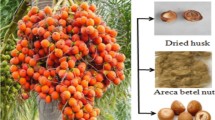Abstract
Tensile properties of fly ash based engineered geopolymer composites (FA-EGC) at different curing ages were studied by uniaxial tensile test and ultrasonic pulse velocity (UPV) methods, which included uniaxial tensile properties, the correlation between ultrasonic pulse velocity and tensile properties, and characteristic parameters of microcracks. The experimental results show that obvious strain hardening behavior can be found in FA-EGC at different curing ages. With the increase of curing age, the tensile strength increases, the tensile strain decreases and the toughness becomes worse. The UPV of FA-EGC increases with curing age, and a strong correlation can be found between tensile strength and UPV. With the increase of curing age, the average crack width of FA-EGC decreases and the total number of cracks increases. This is because the strength of geopolymer increases fast at early age, thus the later strength development of FA-EGC tend to be stable. At the same time, the bond strength between fiber and matrix, and the friction of fiber/matrix interface continue to increase with curing age, thus the bridging effect of fiber is gradually strengthened. In conclusion, the increase of curing age is beneficial to the development of tensile properties of FA-EGC.
Similar content being viewed by others
References
Li KF, Li L. Crack-Altered Durability Properties and Performance of Structural Concretes[J]. Cement and Concrete Research, 2019, 124(10): 105811
Lepech MD, Li VC, Robertson RE, et al. Design of Green Engineered Cementitious Composites for Improved Sustainability[J]. ACI Materials Journal, 2008, 105(06): 567–575
Zhang ZG, Yuvaraj A, Di J, et al. Matrix Design of Light Weight, High Strength, High Ductility ECC[J]. Construction and Building Materials, 2019, 210(06): 188–197
Singh M, Saini B, Chalak HD. Performance and Composition Analysis of Engineered Cementitious Composite (ECC)-A Review[J]. Journal of Building Engineering, 2019, 26(11): 100851
Ishak SA, Hashim H. Low Carbon Measures for Cement Plant-A Review[J]. Journal of Cleaner Production, 2015, 103(09): 260–274
Singh NB, Middendorf B. Geopolymers as an Alternative to Portland Cement: An Overview[J]. Construction and Building Materials, 2020, 237(03): 117455
Lateef NA, Edward D, Mohamed KE, et al. Investigation of Early Compressive Strength of Fly Ash-Based Geopolymer Concrete[J]. Construction and Building Materials, 2016, 112(06): 807–815
Kan LL, Wang F, Zhang Z, et al. Mechanical Properties of High Ductile Alkali-Activated Fiber Reinforced Composites with Different Curing Ages[J]. Construction and Building Materials, 2021, 306(11): 124833
Kan LL, Wang WS, Liu WD, et al. Development and Characterization of Fly Ash Based PVA Fiber Reinforced Engineered Geopolymer Composites Incorporating Metakaolin[J]. Cement and Concrete Composites, 2020, 108(04): 103521
Razzaghi H, Madandoust R Aghabarati H. Point-Load Test and UPV for Compressive Strength Prediction of Recycled Coarse Aggregate Concrete via Generalized GMDH-Class Neural Network[J]. Construction and Building Materials, 2021, 276(03): 122143
Zhang SH, Liu JH, Liu T, et al. Study on Ultrasonic Testing of Strength of Rrecycled Concrete with Fly Ash[J]. Concrete, 2020, 42(04): 14–18
Guo XL, Xiong GY. Preparation and Properties of Engineered Fly Ash Based Geopolymer[J]. Journal of Building Materials, 2019, 22(06): 949–956
Guo XL, Xiong GY, Zhang HM. In-situ Evaluation of Self-Healing Performance of Engineered Geopolymer Composites (EGC) by Ultrasonic Method[J]. Materials Letters, 2020, 280(12): 128546
Tetsushi K, Li VC. Multiple Cracking Sequence and Saturation in Fiber Reinforced Cementitious Composites[J]. Concrete Research and Technology, 1998, 9(02): 19–33
Wu HL, Yu J, Du YJ, et al. Mechanical Performance of MgO-Doped Engineered Cementitious Composites (ECC)[J]. Cement and Concrete Composites, 2021, 115(01): 103857
Wang SL, Le XB, Feng L, et al. Preparation of Early Strength and Fast Hardening Fly Ash Based Geopolymer[J]. Contemporary Chemical Research, 2016, (05): 67–69
Embong R, Kusbiantoro A, Shafiq N, et al. Strength and Microstructural Properties of Fly Ash Based Geopolymer Concrete Containing High-Calcium and Water-Absorptive Aggregate[J]. Journal of Cleaner Production, 2016, 112(01): 816–822
Xu SZ, Cai XR. Basic Mechanical Properties of Engineered Cementitious Composites[J]. Journal of Water Conservancy, 2009, 40(09): 1 055–1 063
Author information
Authors and Affiliations
Corresponding author
Ethics declarations
All authors declare that there are no competing interests.
Additional information
Funded by the National Natural Science Foundation of China (Nos. 52178241 and 52242807), the Fundamental Research Funds for the Central Universities (No. 64522120220599 and 2023-2-YB-20), and the National Key Research and Development Program of China during the Fourteenth Five-Year Plan Period (Nos. 2021YFB3802001 and 2019YFE0112600)
Rights and permissions
About this article
Cite this article
Guo, X., Li, S. Effect of Curing Age on Tensile Properties of Fly Ash Based Engineered Geopolymer Composites (FA-EGC) by Uniaxial Tensile Test and Ultrasonic Pulse Velocity Method. J. Wuhan Univ. Technol.-Mat. Sci. Edit. 38, 1319–1325 (2023). https://doi.org/10.1007/s11595-023-2826-x
Received:
Accepted:
Published:
Issue Date:
DOI: https://doi.org/10.1007/s11595-023-2826-x




